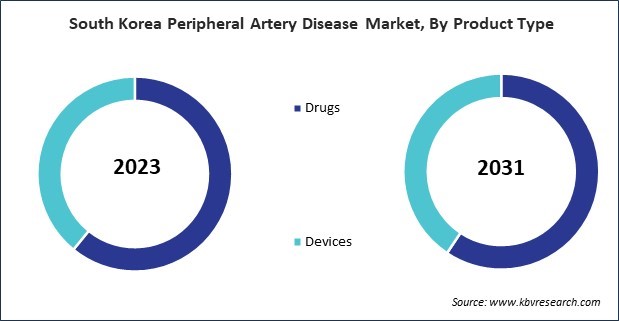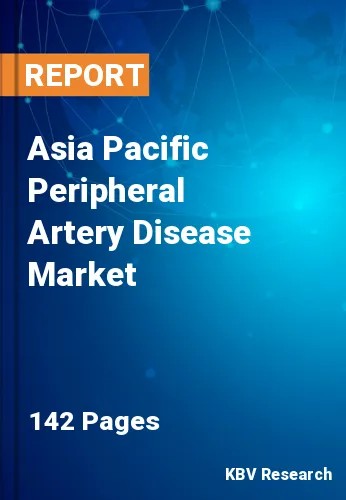The Asia Pacific Peripheral Artery Disease Market would witness market growth of 7.8% CAGR during the forecast period (2024-2031).
The China market dominated the Asia Pacific Peripheral Artery Disease Market by Country in 2023, and would continue to be a dominant market till 2031; thereby, achieving a market value of $541.2 million by 2031. The Japan market is registering a CAGR of 7.1% during (2024 - 2031). Additionally, The India market would showcase a CAGR of 8.4% during (2024 - 2031).

The aging population not only drives the prevalence of PAD but also highlights the need for comprehensive care and effective treatment strategies. Older adults are more susceptible to PAD and its associated risk factors, necessitating ongoing monitoring and management. The increasing number of elderly individuals with PAD places additional demands on healthcare systems, emphasizing the need for effective and innovative treatments.
Increased healthcare spending, especially in developing countries, is another factor enabling the widespread adoption of PAD treatments. Governments and private sector investors recognize the importance of building robust healthcare infrastructures to address the growing burden of chronic diseases, including PAD. Increased healthcare expenditure facilitates greater access to advanced medical technologies and therapies, improving patient outcomes and driving market growth.
In Japan, more than 1 in 10 people are now aged 80 or older, and the country consistently rates as having the world's oldest population. The Japanese government has been promoting early diagnosis and comprehensive treatment of PAD through national health policies and programs. Efforts include increasing public awareness about the disease and providing advanced medical care options to manage and treat PAD effectively. Similarly, the Australian government has been implementing public health initiatives to address these issues, including the National Tobacco Strategy and the Healthy Weight Guide, which aim to reduce smoking rates and promote healthy lifestyles. Additionally, there is a focus on improving early diagnosis and treatment options for PAD to manage the growing healthcare burden. Therefore, the APAC market is expected to grow significantly due to the abovementioned factors.
Free Valuable Insights: The Global Peripheral Artery Disease Market is Predict to reach USD 7.1 Billion by 2031, at a CAGR of 6.9%
Based on Product Type, the market is segmented into Drugs (Antiplatelet Medicines, Statins, Anti Hypertensive Medication, and Others), and Devices (Peripheral Stents, Peripheral Angioplasty Balloons, Peripheral Catheters, Plaque Modification Devices, Inferior Vena Cava Filters, Hemodynamic Flow Alteration Devices, and Peripheral Accessories). Based on End User, the market is segmented into Hospitals, and Specialty Clinics. Based on countries, the market is segmented into China, Japan, India, South Korea, Singapore, Malaysia, and Rest of Asia Pacific.
By Product Type
By End User
By Country
Our team of dedicated experts can provide you with attractive expansion opportunities for your business.

